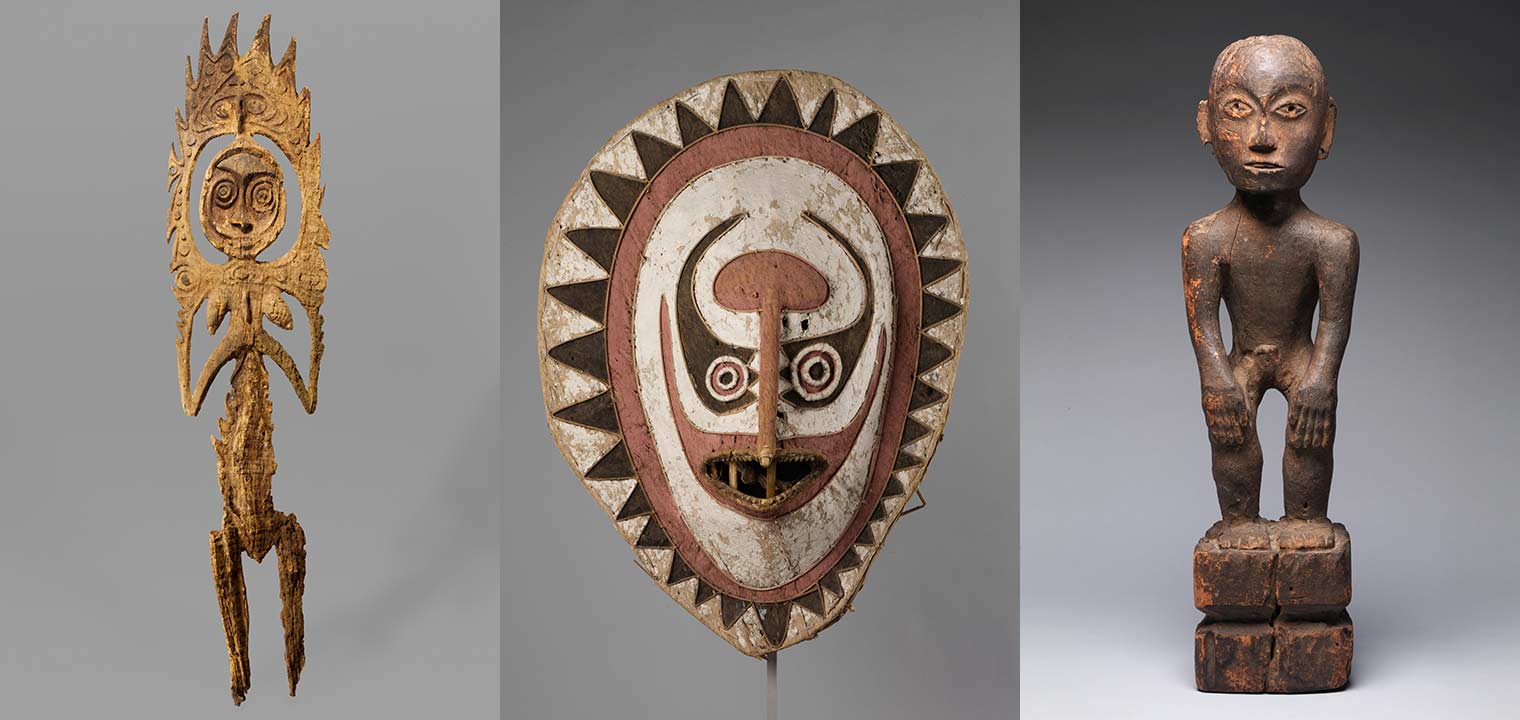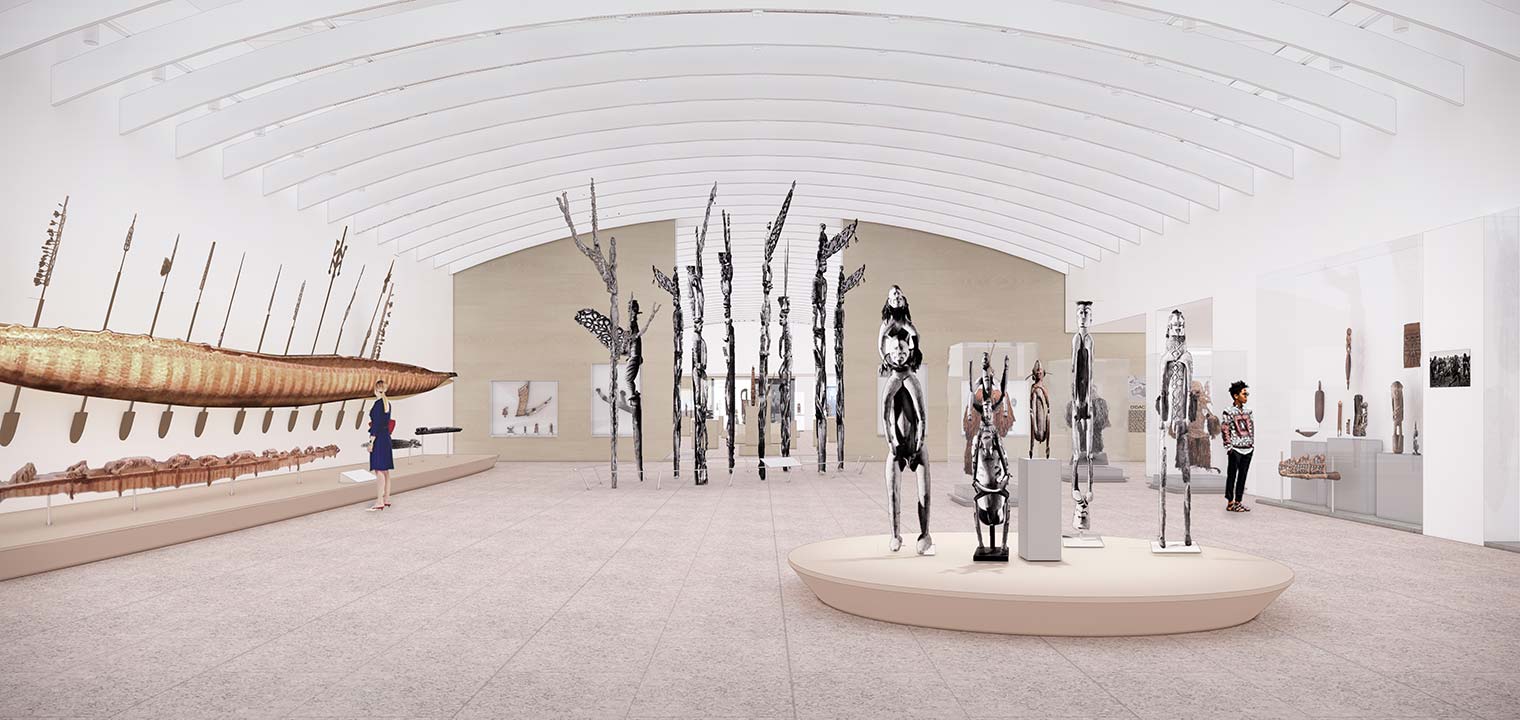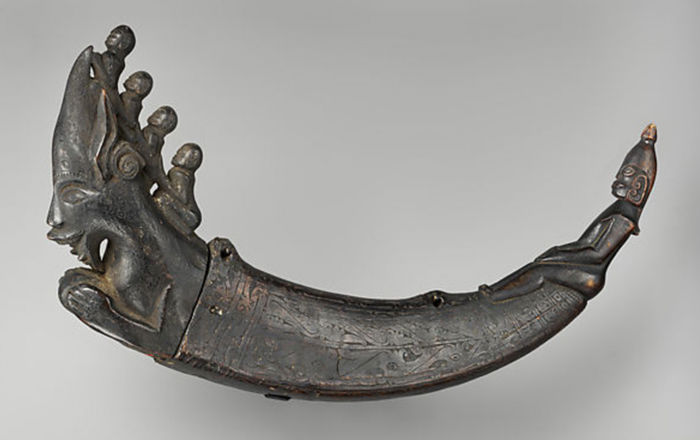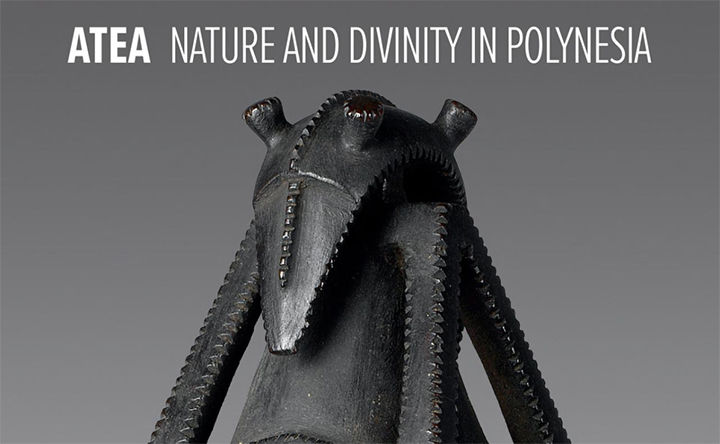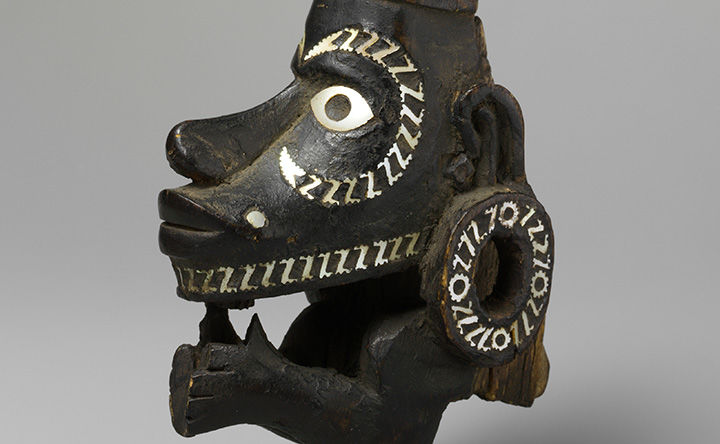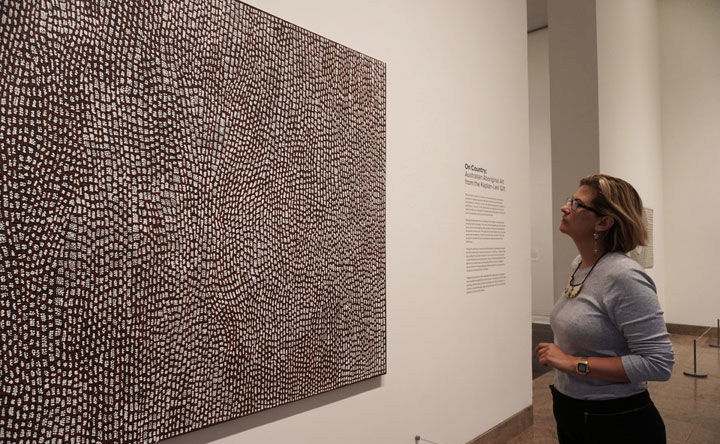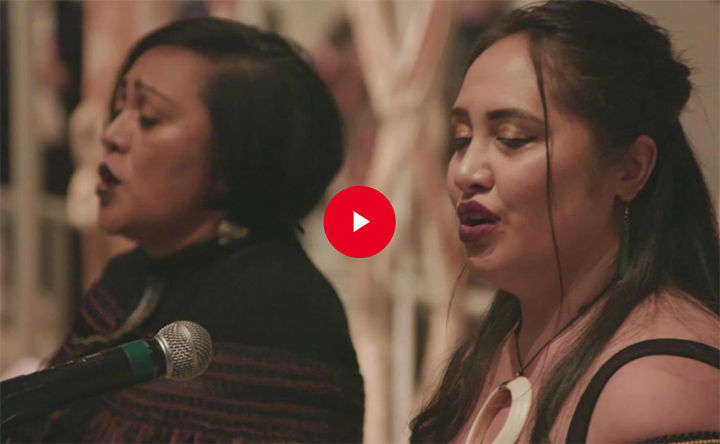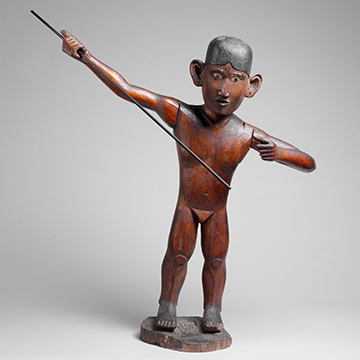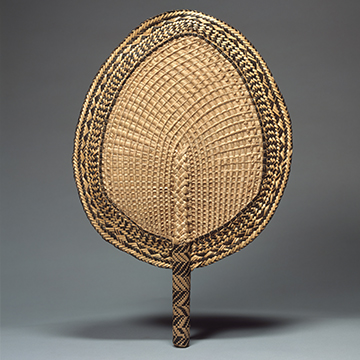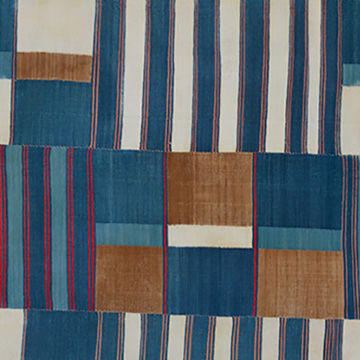
Oceanic Art in The Michael C. Rockefeller Wing
The Met’s galleries devoted to Oceanic art—including Gallery 354, which features the breathtaking Kwoma ceiling—have temporarily closed in preparation for an exciting new renovation project, which will reimagine the conceptual and physical footprint of The Michael C. Rockefeller Wing for a new generation of visitors.
While the galleries are closed a selection of works are on view in the Great Hall Balcony.
Encompassing the arts and cultures of the Pacific Islands, The Met's collection of Oceanic art comprises over 2,800 works that reflect the rich history of creative expression and innovation that is emblematic of the region. The collection includes art from the two neighboring regions of Australia and Island Southeast Asia, whose indigenous peoples share a common ancestry with Pacific Islanders. While the earliest examples of Oceanic art—the richly hued rock paintings of Aboriginal Australians—are believed to be more than forty thousand years old, the vast majority of extant material culture dates from the eighteenth century to the present day. Highlights of the Oceania collection include monumental architecture from the diverse cultural groups of New Guinea and a spectacular range of ceremonial sculpture from the coastal archipelagoes that surround it.
These exceptional artworks tell a wealth of stories relating to origins and ancestral power, performance and initiation. They include some of the greatest achievements of Pacific Islanders in the realm of the visual arts: elaborately carved ancestral figures from ceremonial houses and spectacular ritual regalia such as towering slit drums, skull reliquaries, and dazzling turtle shell masks from the coastal regions. Voyaging and the arts of navigation are another important feature with decorated paddles, exquisitely carved canoe prows from the Solomon Islands, and a navigational chart from the coral atolls of the northern Pacific, evoking the extraordinary story of voyaging—both literal and metaphorical—across the vast landscape of Oceania from the earliest migrations of its peoples five thousand years ago to final settlement in the farthest extremities of the region in 1200 A.D.
Oceania is vast,
Oceania is expanding… rising from the depths of brine and regions of fire deeper still.
Oceania is us,
We are the sea. We are the ocean.
—Epeli Hau'ofa (1939–2009)
Tongan scholar, poet, activist
Oceanic art entered The Met with the establishment of the Department of the Arts of Africa, Oceania, and the Americas in 1969 following the promised gift of Nelson A. Rockefeller. The Rockefeller bequest included more than two thousand works of Oceanic art as well as the specialized Robert Goldwater Library and the Visual Resource Archive. In 1982, The Michael C. Rockefeller Wing, newly built to display the collections, opened to the public. The wing is named for Nelson Rockefeller's son, Michael, who made a major collection of Asmat art during two field expeditions to New Guinea in 1961. Acquired directly from the artists who made them, this area of the collection contains rich contextual information including the names of artists and their personal commentary, affording us rare insights from the unique perspective of the artists themselves. One decade later, visionary curator and first head of the department, Douglas Newton, commissioned 245 paintings from contemporary Kwoma artists in New Guinea during a series of visits he made to the Sepik River region between 1971 and 1973. These painted panels were shipped to New York where they were installed in a dramatic display that evokes the dynamic visual interior of a men's ceremonial house. This now iconic installation is a principal feature of our Oceania galleries.
The online collection features high-resolution, open-access images of works in the collection, along with cultural and chronological information. These object records—an ongoing research project—also provide data on the history of works from the time of their creation to their acquisition by the Museum.
For further reading on the history of the department, see Making The Met: 1870-2020 and The Nelson A. Rockefeller Vision: Arts of Africa, Oceania, and the Americas.
Explore the Collection
Discover highlights from our Collection.
The Renovated Galleries
After nearly forty years since the inauguration of The Michael C. Rockefeller Wing, The Met is creating three distinct new galleries for African Art, Ancient American Art, and Oceanic Art. Learn more about the renovation here.
Special Installations
Containing the Divine: North Sumatra, Indonesia
Learn how vessels made by the the Toba Batak peoples of Indonesia were used to mediate between the human and supernatural world.
Related Content
Publications
Discover The Met's many publications on Oceanic art.
Heilbrunn Timeline of Art History
Browse richly illustrated essays on Oceanic art.
Blog Articles
Read fresh perspectives on Oceanic art from curators and others at the Museum.
Videos
Watch videos on Oceanic art at The Met — interviews, lectures, exhibitions previews, and more.
Stay Connected
Meet the Staff
Get to know the people who care for the art.
Meet the Fellows
Meet the Fellows and learn about their research.
Curatorial Friends Group
The Friends of The Michael C. Rockefeller Wing: Art of Five Continents brings together patrons and collectors in support of the department.
